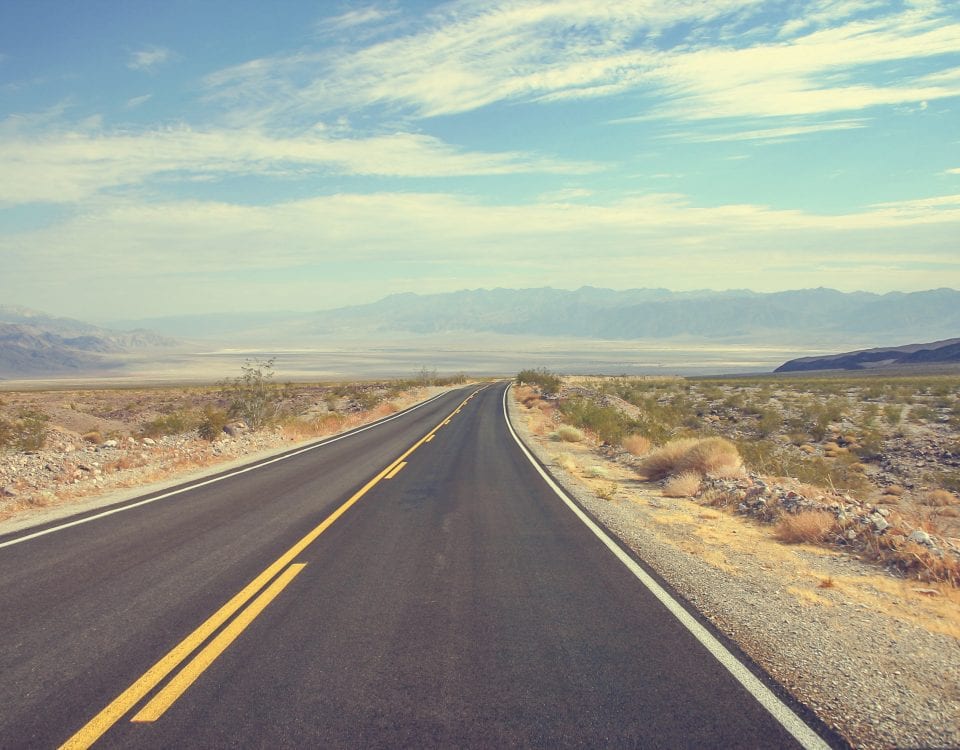
Day 49: Little Houses, Big Farms in the Dakotas
May 7, 2021
Day 47: The Road to Minneapolis
May 5, 2021Most recently updated on February 18, 2024
Originally posted on May 6, 2021
We’ve got a lot of Minnesota to see today before we cross over into our next state.
First, there is one final historic stop to make in Minneapolis.

About 20 million victory gardens were planted in the United States during World War Two. Photo by Sarah Sundin.
So, we follow the Mississippi south out of downtown for a half-hour until we reach the Michael Dowling School.
What we’ve come to see is not the classrooms or playground. We’re here to inspect the garden.
The school is home to the Dowling Community Garden. It’s believed to be one of only two Victory Gardens left from World War Two. The other is The Fenway Victory Gardens in Boston.
This all got started more than 100 years ago.
People in the United States planted “victory gardens” during World War One. In early 1942, the country was asked again to establish these gardens because farmers were primarily producing food for soldiers overseas. In addition, trucks and other transportation were being used for war efforts, so crops couldn’t be transported long distances.
During those war years in the 1940s, about 20 million victory gardens were planted in back yards, flower beds, parks, rooftops and other places. In 1944, these gardens produced more than 1 million tons of vegetables, about 40 percent of all the vegetables grown in the country that year.
During 2020, victory gardens made a comeback during the COVID-19 pandemic. One expert told Organic Farmer in November 2020 that she hoped the gardens would continue even after the pandemic eases. Perhaps they might. A Facebook group called Victory Garden 2020 still has more than 900 members.
The Dowling garden was started in 1943 on the school grounds. Minneapolis had an estimated 130,000 gardeners at that time. The Dowling garden now consists of 190 plots with 250 gardeners.
———————————-
It’s just another 20 minutes south from the Dowling school to reach Bloomington.
This is second town of such name we’ve encountered on our route, the other being in Indiana.
Bloomington, Minnesota, is a city of 84,000 residents along the Minnesota River that is best known for its gigantic shopping center.
This area was first inhabited by nomads who arrived after the Ice Age glaciers retreated 14,000 years ago. They hunted mammoths and great bison.
In 1829, Chief Cloud Man relocated his Dakota Mdewakanton tribe here. In 1843, the first European settlers, Peter and Louisa Quinn, built a log cabin after the federal government had sent them here to teach Native Americans how to farm. Missionaries arrived later that year.

It would take an estimated 86 hours to visit every store in the Mall of America in Bloomington, Minnesota. Photo by Britannica.
The Bloomington Ferry service began in 1852. It lasted until 1892 when the Bloomington Ferry Bridge was built. Settlers from yet another Bloomington, this one in Illinois, arrived in 1851 and named the town after their former home.
The early economy centered on farming, flour mills and blacksmiths. The river was used to transport barges of hay, wood and wheat.
City grew slowly in the early 1900s. Bloomington then boomed after World War Two as a post-war suburb with low-cost, low-density housing.
Toro Manufacturing Company set up shop here in 1952, but Bloomington was really put on the map in 1992.
That’s when the Mall of America opened on 78 acres once occupied by the stadium for the Twins and Vikings. It’s the largest indoor shopping mall in the country with 4.8 million square feet. The mall contains 520 stores and 60 restaurants along with the Nickelodeon Universe amusement park, the state’s largest aquarium and the Amazing Mirror Maze.
Mall officials estimate it would take you 86 hours to visit every store there, even if you spent less than 10 minutes in each one.
A 12-mile light-rail transit system connects the mall to downtown Minneapolis. About 11,000 people work at the mall, about 1,000 of them for the center itself. The center gets nearly 40 million visitors in a typical year.
The Middle of Minnesota
We depart in northwesterly direction out of Bloomington on good old Interstate 94.
There’s a lot of ground to cover as Minnesota is no small state. Its 86,935 square miles ranks it 12th in area. It’s the second largest non-western state, behind only Michigan.
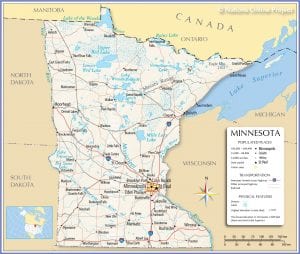
The North Star State has 5.7 million residents, putting it in 22nd place. About 77 percent of the population is white with 7 percent Black, 6 percent Hispanic or Latino and 5 percent Asian. About 60 percent of its population lives in the Minneapolis-St. Paul metropolitan area. The population is among the best educated in the country. The median annual household income is $84,000.
Minnesota is known as the Land of 10,000 Lakes, but the state actually has 11,842 of them.
The first European explorers were trappers who arrived in the 1600s. Like so many other states, Minnesota became part of the United States as a result of the 1803 Louisiana Purchase.
The early economy revolved around lumber and agriculture with the state’s rivers and falls providing transportation and power. A plethora of flour mills were established.
In the 1800s and 1900s, immigrants from Scandinavia and Germany arrived. The technology industry began to move in after World War Two. The economy has diversified more since with finance and service sectors.
Agriculture is still an important economic engine. Minnesota is the sixth leading state in terms of agricultural production. It’s first in turkey production as well as second in green peas and pork. The state is fourth in corn production.
Minnesota is also a leader in ethanol fuel production. It was the first state to mandate its use (10 percent ethanol). There are about 420 stations that have E85, or 88 octane, fuel.
——————————-
We’re burning a significant amount of virtual fuel as we slice across the North Star State.
Along the way, we cross the 45th parallel, the geographic line that is halfway between the equator and the North Pole. There are markers denoting the parallel’s location in several places northwest of Minneapolis. This is the first of six times we will cross this line during the final 13 days of this trip.
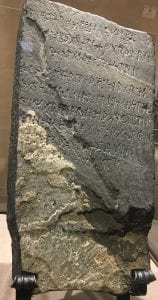
The Kensington Runestone on display in Alexandria, Minnesota, is thought to be a hoax by most scholars. Photo by Wikipedia.
About two hours after departing from Bloomington, we reach the town of Alexandria.
This community of nearly 15,000 people has some Viking history and a 200-pound stone to prove it.
This region, which sits at 1,400 feet elevation, was once the camping grounds for Sioux and Ojibwa tribes. It was founded in 1858 by brothers Alexander and William Kinkead of Delaware who established a settlement with a hotel and log cabin along the shores of Lake Agnes. The town is named after Alexander Kinkead.
In 1859, a state road was built through the area with the J.C. Burbank stage line arriving shortly after. In 1862, a Sioux uprising drove settlers out, but they returned when the uprising was quelled.
Fort Alexandria was built in 1863 and the Homestead Act brought European immigrants and Civil War soldiers to the area. In 1867, W.E. Hicks purchased the townsite and established a flour mill, a saw mill and a store. The Soo Line railroad arrived in the late 1800s.
The economy today consists of farming (oats, corn, soybeans), dairy, livestock and light manufacturing.
The town is also a hot spot for tourism due to its many lakes and resorts.
In addition, Alexandria is known for its Runestone Museum that houses the Kensington Runestone, a 200 pound block of sandstone known as greywacke covered in ancient letters known as runes. A Swedish immigrant named Olaf Ohman said he found it in 1898 on his farm outside of town. The inscription supposedly reports on a visit to the region by Scandinavian explorers in 1362.
Some people in town are convinced the stone is authentic, but most scholars agree it’s a hoax, probably perpetuated by Ohman.
The museum contains other artifacts found in Minnesota related to early Scandinavian explorers, including a 45-foot Viking ship. The museum opened its doors in 1958. Outside the museum is Big Ole, a 28-foot, 4-ton statue of a Viking built for the World’s Fair in New York City in 1965.
The city also hosts the Vikingland Band Festival in late June.
Finally, there is the Legacy of the Lakes Museum, which celebrates the more than 10,000 lakes in Minnesota. The museum opened in 2004 and includes exhibits on boat builders.
Approaching North Dakota
It’s another hour and a half up Interstate 94 and right before you leave Minnesota you hit the town of Moorhead.
The community of 45,000 that rests along the meandering Red River at the North Dakota border is the largest city in northwest Minnesota.
It also has a place in radio, music and Dairy Queen history.
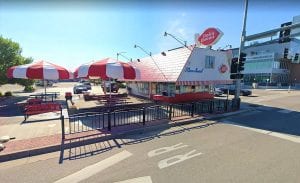
This Dairy Queen in Moorhead, Minnesota, is one of the original of the franchise’s restaurants. Photo by Y105FM.
The town was founded in 1871 and named after William Garroway Moorhead, an official of Northern Pacific Railroad.
Pioneers taking advantage of the Homestead Act settled the region. The Red River was used to transport good. In the 1800s, the town had a reputation as “Sin City” because it had 100 bars when North Dakota towns on the other side of the river didn’t allow alcohol sales.
Agriculture is the prime industry, especially sugar beets as well as wheat, barley and potatoes. It’s the corporate headquarters of American Crystal Sugar. In addition, Pactiv Evergreen has a large food container factory in town.
The town is mentioned in the 1978 movie “The Buddy Holly Story” because Moorhead was the next stop on Holly’s “Winter Dance Party” tour before his plane crash. Moorhead is also mentioned as the character Bunny’s hometown in the 1998 film “The Big Lebowski.”
The Prairie Home Cemetery here was the inspiration for the name of Garrison Keiller’s radio show, A Prairie Home Companion.
Moorhead is also home to the first Dairy Queen to sell dilly bars. The local shop was opened in 1949 by Bob and Phyllis Litherland. It is one of the few Dairy Queens that is still operating under an original 1949 contract, allowing it to sell products without getting approval from corporate headquarters.
Among the items at the Moorhead Dairy Queen are dilly bars and chipper sandwiches (vanilla ice cream sandwiched between two chocolate chip cookies and dipped in chocolate).
Moorhead is also home to the Hjemkomst Viking Ship, which is on display in the city’s Viking Ship Park. The ship was the dream of Moorhead resident Robert Asp, a junior high school guidance counselor who was of Norwegian descent. Asp worked on building the Viking ship replica, using local timber, from 1971 until his death in 1980. His family, friends and others, however, fulfilled his dream in 1981 by sailing his creation through the Great Lakes and New York harbor across the Atlantic to Norway. In 1983, the ship was transported back to Moorhead, where it remains on display.
——————————————
Interstate 94 takes you over the Red River and lands you not only in North Dakota but also its biggest city.
Fargo is the most populous community in this sparsely populated state with 135,000 residents. The city is about two hours from the Canadian border and this is the closest we will get to our neighbor to the north on our journey.
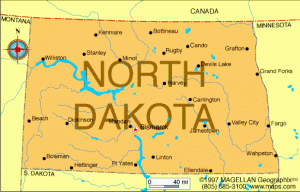
This region was part of the Sioux (Dakota) territory. It was also an early stopping point for steamboats on the Red River. The town was founded in 1871 by Northern Pacific Railroad officials and named after William Fargo, a partner in the Wells, Fargo and Company.
The local wheat industry spurred Fargo’s early economy. In 1905, Fargo became the headquarters of the Pence Automobile Company. The city also experienced a boom after World War Two, especially after two freeways were completed and the West Acres Shopping Center opened.
Fargo now has a low crime rate, a low unemployment rate and affordable housing. It still has a strong agriculture industry from the Red River Valley soil. It’s also aided by oil exploration in the Bakkan formation to the west. Manufacturing includes farm implements, construction equipment, software and sugar beet processing
Fargo was the centerpiece of the 1996 Academy Award-winning film “Fargo.” The film, however, was not shot in town. Most of the movie was filmed in Minnesota.
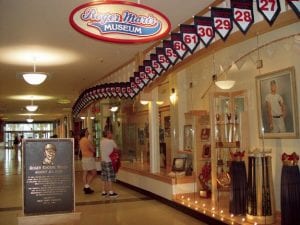
The Roger Maris Museum in Fargo, North Dakota. Photo by Traveling Mom.
The Plains Art Museum here is the largest art museum in the state. It opened in 1965 and contains 56,000 square feet. The collection is made up of 4,000 pieces of art, including Native American art and works by Salvador Dali and Andy Warhol.
The Roger Maris Museum is a small facility located in the West Acres mall. The museum honors Maris’ life and career, focusing on his 1961 season in which he hit a record 61 homeruns. It contains a small theater that shows film clips of his baseball career as well as seats from Yankee Stadium. There are also some of Maris’ uniforms and a replica of his Yankee Stadium locker.
Maris was born in Minnesota but attended high school in Fargo. The museum was opened in 1984 and Maris insisted it be available to the public and free of charge. Maris died in 1985 and is buried at Holy Cross Cemetery here.
Maris was one of the famous players on the New York Yankees along with Mickey Mantle that I remember from my first season of watching baseball in 1962.
So, a time to rest and reflect as we end Day 48.
Tomorrow, we follow the Red River through the eastern edge of both Dakotas. We’ll learn the history of the so-called “bonanza farms,” visit a “little house” on the Dakota prairie and check in on a city known for its meatpacking industry and its waterfalls.


